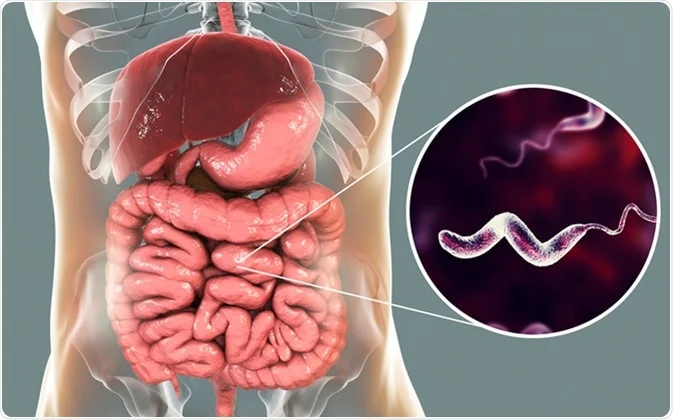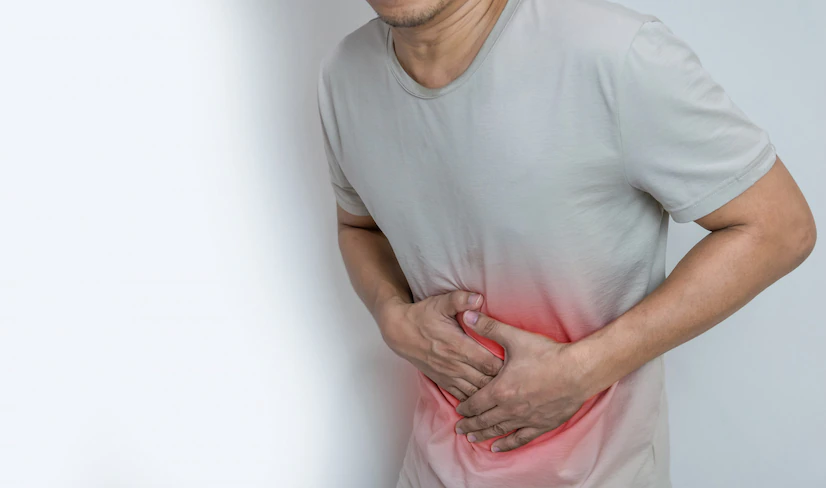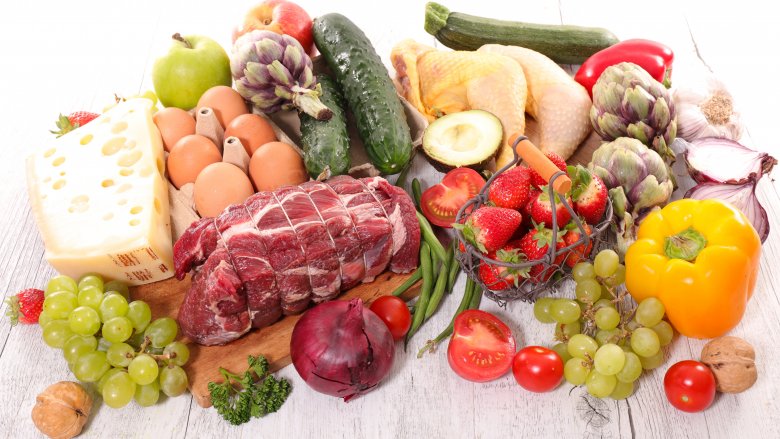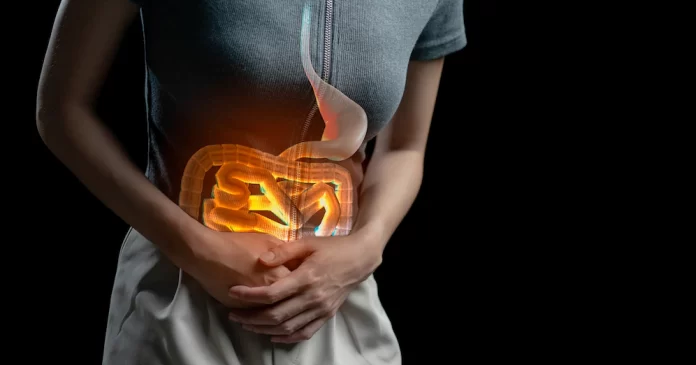Food poisoning, often known as a foodborne illness, is an ailment brought on by consuming spoiled or contaminated food. The most frequent causes of food poisoning are infectious organisms or their toxins, such as bacteria, viruses, and parasites.
Food can get contaminated by infectious organisms or their poisons at any stage of processing or production. Contamination can also happen if food is handled or cooked improperly at home.
Symptoms of food poisoning, which can appear hours after consuming tainted food, frequently include nausea, vomiting, and diarrhoea. Food poisoning usually only causes mild symptoms that go away on their own. However, some patients require hospitalisation.
Symptoms Of Food Poisoning
The source of contamination affects the symptoms of food poisoning. One or more of the following signs and symptoms are brought on by the majority of food poisoning types:
- Nausea: Nausea is a feeling of nausea and the desire to vomit. The urge to vomit the contents of the stomach can be preceded by nausea. The disorder can frequently be avoided and has a wide range of reasons.
- Vomiting: Throwing up is the forceful expulsion of stomach contents, known as vomiting. It can be a one-time occurrence connected to something that upsets the stomach. Underlying medical issues may be the cause of recurrent vomiting.
- Bloody or watery diarrhoea: Bloody diarrhoea is referred to as dysentery. Shigella bacteria and the parasite Entamoeba histolytica are the most typical causes of dysentery. These have the potential to bring on severe infections that can irritate the intestines to the point of bleeding.
- Cramping and discomfort in the abdomen: Cramps and pain in the abdominal region are very common in people who are suffering from food poisoning. The area between the chest and pelvis is known as the abdomen. It’s possible for abdominal discomfort to be severe, dull, sharp, achy, or crampy. Another name for it is a stomachache.
- Fever: If either your oral or rectal temperature is greater than 100°F (37.8°C), you have a fever. A temperature of 102.2°F (39°C) or greater in adults and children older than 3 months is regarded as a severe fever.
After consuming the contaminated food, signs and symptoms may appear right away or they may take days or even weeks to manifest. Food poisoning-related illness typically lasts a few hours to several days.

Causes Of Food Poisoning
Food can get contaminated at any production stage, including planting, harvesting, processing, storing, transporting, and preparation. The cause is frequently cross-contamination, which is the movement of dangerous organisms from one surface to another. This is particularly problematic for meals that are raw and ready to consume, such salads or other produce. These foods aren’t cooked, thus dangerous microorganisms aren’t eliminated before consumption and can result in food poisoning.
Food poisoning can be caused by various bacteria, viruses, or parasites. The following table lists several potential pollutants, likely onset dates for symptoms, and typical means by which the organism is transmitted.
How Long Does Food Poisoning Last?
Different contaminants affect and are the causes of food poisoning. The duration of how long food poisoning last dependents hugely on the type of contaminants. Some microorganisms make you sick shortly after you ingest them. Some may take many days to make you feel ill. The symptoms, onset dates, and typical food sources for the bacteria that cause food poisoning are all listed here. The germs are listed in order of when symptoms first appear.
Here are the details of them and the time of the onset of symptoms:
Staphylococcus (Staph)
A common component of the body’s microbiota, Staphylococcus aureus is a Gram-positive, spherically shaped bacterium that belongs to the Bacillota and is frequently found in the upper respiratory tract and on the skin. 30 minutes to 8 hours after exposure.
symptoms start to appear: stomach cramps, vomiting, and nausea. Diarrhea is another common condition. common sources of food sandwiches, cut meats, puddings, pastries, and other foods that haven’t been cooked after handling
Prevention:
- Using a food thermometer, cook items until they reach their minimum safe internal temperature.
- Maintain a 40°F minimum temperature for cold meals and a 140°F minimum for hot items.
- If it’s hotter than 90° F outside, keep cooked food in shallow containers and refrigerate within 2 hours.
- Before, during, and after preparing meals as well as before eating, wash your hands with soap and water for 20 seconds.
- If you have diarrhoea or are throwing up, avoid preparing meals.
- If you have cuts or infections on your hands or wrists, wear gloves when preparing food.
Campylobacter
They last between 2 to 5 days. The contaminants spreads through poultry and meat. Contamination happens if animal waste comes into contact with meat surfaces during processing. Milk that hasn’t been pasteurised and tainted water are further sources are also the factor of this transmission.
Prevention:
- Consume pasteurised milk. Don’t consume raw milk.
- Never consume untreated water.

Clostridium botulinum
The person affected by the Clostridium botulinum contaminant might be wondering how long does food poisoning last? For them, the suffering can be for a small duration of 12 to 72 hours. It spreads from the low-acidity home canned foods, commercial food that has been incorrectly canned, smoked or salted salmon, potatoes cooked in aluminium foil, and other foods that have been held at high temperatures for too long.
Clostridium perfringens
Do you know the onset time of symptoms for Clostridium perfringens? It is generally between the time of 8 to 16 hours of the food poising caused to you. And the mode of their transmission are generally from stews, gravies, and meats. It usually occurs when food is cold too slowly or is not kept hot enough in serving dishes.
Prevention:
- Serve hot meat dishes within two hours of cooking and keep meals hot (at 140 °F or above).
- To 165°F or above, fully microwave the leftovers.
- Refrigerate leftovers at 40 degrees Fahrenheit or lower within two hours of preparation.
- Huge quantities of food, like roasts or large pots of chilli or stew, should be divided into shallow containers and refrigerated right away. It is acceptable to immediately place hot items in the refrigerator.
Escherichia coli (E. coli)
Almost every individual has heard of this bacteria atleast once in their lifetime. Escherichia coli, found in the lower intestine of warm-blooded species, is a Gram-negative, facultatively anaerobic, rod-shaped coliform bacteria of Escherichia. The onset time of symptoms of this bacteria lies between the period of 1 to 8 days.
How long does food poisoning last: The food poising caused by this can last in between 5 to 10 days. They spread through the faeces of tainted beef that was slaughtered. They are also generally caused by undercooked ground beef. Unpasteurized milk, unpasteurized apple cider, alfalfa sprouts, and tainted water are among more possibilities.
Prevention:
- Consume low-risk foods sparingly, especially sprouts, unpasteurized milk, juice, soft cheeses made from unpasteurized milk, and undercooked ground beef.
- Verify that ground beef has achieved a safe internal temperature of 160° F using a food thermometer.
- After changing a baby’s diaper and coming into contact with cows, sheep, or goats, food or snacks, or living space, wash your hands thoroughly.
Listeria
Listeria monocytogenes is a bacterium that can cause the deadly infection listeriosis. Usually, ingesting contaminated food causes people to get listeriosis.
The first symptoms of listeria usually appear two weeks after exposure: Women who are pregnant typically experience a fever as well as other flu-like symptoms like exhaustion and aches and pains.
Pregnancy-related infections can cause serious sickness or even death in the newborns. In addition to fever and muscle aches, other persons (most typically elderly adults) can have headaches, stiff necks, disorientation, loss of balance, and convulsions.
Queso fresco and other soft cheeses, raw sprouts, melons, hot dogs, pâtés, deli meats, smoked seafood, and raw (unpasteurized) milk are common food sources.

Prevention:
- Unless they are roasted to an internal temperature of 165°F or until steaming hot before consuming, hot dogs, cold cuts, and deli meats are prohibited.
- Unless it is canned, shelf-stable, or contained in a cooked dish like a casserole, smoked fish must be kept in the refrigerator.
- sprouts of any kind, whether raw or lightly cooked
- Soft cheeses like queso fresco, queso blanco, panela, short, Camembert, blue-veined, or feta are acceptable as long as they are declared as being prepared with pasteurised milk.
- Be careful that Mexican-style cheeses, such queso fresco, prepared from pasteurised milk have been linked to Listeria infections, most likely as a result of contamination during the cheese-making process. Cream cheese, mozzarella, and hard cheeses are safer options, especially for expectant mothers.
Hepatitis A
An infectious virus called hepatitis A can result in liver damage. An infection with the hepatitis A virus (HAV) can cause a mild sickness that lasts a few weeks or a severe illness that lasts several months. Hepatitis A infections can occasionally lead to liver failure and death, especially in those with compromised immune systems or pre-existing medical conditions.
Most cases of hepatitis A are brought on by unknown factors or being in close proximity to an infected person; however, some cases are brought on by consuming tainted food or water. When a food handler with an infection prepares food without using proper hand washing techniques, food and water may get contaminated.
The onset of symptoms is between 15- 28 days and can take more 28 days to recover.
How long does food poisoning last: Though some people can experience illness for up to 6 months, symptoms typically persist for less than 2 months.
Prevention:
- The greatest method of preventing hepatitis A is vaccination. It is advised that all children receive the hepatitis A vaccine at age one.
- individuals who have had direct touch with hepatitis A patients
- individuals with long-term or chronic liver disease
- people with abnormalities of the clotting factor
- Visitors to nations where hepatitis A is prevalent Men who engage in male sex with males
- those who inject drugs
NoroVirus
Sources: Shellfish, ready-to-eat foods touched by infected food workers (salads, sandwiches, ice, cookies, fruit), or any other foods contaminated with particles of vomit or feces from an infected person. The incubation period is between 12 to 48 hours.
Symptoms are as follows for Norovirus: Diarrhea, vomiting, nausea, and stomach pain. Diarrhoea tends to be watery and non-bloody. Diarrhea is more common in adults and vomiting is more common in children.
How long does food poisoning last: 1 to 3 days. Among young children, older adults, and hospitalized patients, it can last 4 to 6 days.
Prevention:
- Wash hands often, especially after using the restroom and before, during, and after preparing food. Spend at least 20 seconds doing so while using soap and running water.
- Avoid touching ready-to-eat items with your bare hands if you work in a restaurant or deli.
- Surfaces contaminated by vomit or diarrhoea should be cleaned and disinfected (use a bleach-based household cleaner as directed on the label). Clean and sanitise surfaces and equipment used in food preparation.
- Do not cook, prepare, or serve food for others if you have diarrhoea or vomiting and for two days afterwards.
- Before eating, properly cook oysters and other shellfish as well as wash fruits and vegetables.
- Vomit or faeces-soiled garments or linens should be washed right away. To prevent the virus from spreading, wipe away the things.

What Are The Risk Factors For Food Poisoning?
The organism, the level of exposure, your age, and your health all have a role in determining whether you get sick after eating infected food. Groups at high risk include:
1. Older people. Your immune system may not react to infectious organisms as quickly and efficiently as it did when you were younger as you get older.
2. Pregnant women. During pregnancy, changes in metabolism and circulation may increase the risk of food poisoning. Your reaction may be more severe during pregnancy. Rarely may your baby get sick, too.
3. Infants and young children. Their immune systems haven’t fully developed.
People with chronic disease. A chronic condition — such as diabetes, liver disease or AIDS — or receiving chemotherapy or radiation therapy for cancer reduces your immune response.
Complications
Dehydration, or a significant loss of water, vital salts, and minerals, is the most frequent dangerous complication of food poisoning. Dehydration shouldn’t be an issue if you’re an adult in good health and consume enough liquids to make up for the fluids you lose from vomiting and diarrhoea.
When individuals lose more fluids than they can replace, infants, older adults, and persons with weakened immune systems or long-term illnesses may suffer from severe dehydration. They can then require hospitalisation and intravenous fluid therapy. Dehydration can be lethal in severe circumstances.
Some types of food poisoning might result in life-threatening complications for certain people. These consist of:
Infection with listeria: The effects of listeria food poisoning may be particularly harmful to unborn children. Listeria infection may cause a miscarriage early in the pregnancy. Even if the mother was only mildly unwell at the time, listeria infection later in pregnancy might result in stillbirth, early birth, or a potentially fatal illness in the newborn after birth. Infants who recover from a listeria infection may suffer long-term brain harm and developmental delays.
Eccherichia coli (E. coli): The hemolytic uremic syndrome is a dangerous complication that can be brought on by some E. coli strains. The kidneys’ linings of their microscopic blood arteries are harmed by this illness, which can occasionally result in renal failure. This problem is more likely to occur in older persons, kids under the age of 5, and people with compromised immune systems.
Prevention
To avoid food poisoning at home:
- Wash your hands, eating surfaces, and kitchenware frequently. Before handling or preparing food, as well as afterwards, thoroughly wash your hands with warm, soapy water. To clean utensils, cutting boards, and other surfaces you use, use hot, soapy water.
- Separate raw foods from prepared foods. Keep raw meat, poultry, fish, and shellfish separate from other foods, whether grocery shopping, making meals, or storing food. By doing this, contamination is avoided.
- To a safe temperature, prepare meals. Using a food thermometer is the best way to determine whether food has been cooked to a safe temperature. Most foods can be cooked to the proper temperature to destroy hazardous microbes.
- Cook steaks, roasts, and chops made of lamb, pork, and veal to at least 145 F; cook ground beef to 160 F (71.1 C) (62.8 C). To 165 F, cook the chicken and turkey (73.9 C). Make sure to cook any fish or shellfish properly.
- Store them in the refrigerator or freezer within two hours of buying or preparing perishable items. Perishable goods should be refrigerated within an hour if the ambient temperature is above 90 F (32.2 C). Safely reheat frozen food. Food should not defrost at room temperature. Food should be defrosted in the refrigerator to thaw safely. Make sure to promptly cook frozen food if you microwave it on the “defrost” or “50% power” setting.
- When in doubt, dump it. When in doubt about how a food was prepared, served, or stored, throw it out. Too much time spent at room temperature can cause food to develop bacteria or poisons that are resistant to cooking. Food you aren’t sure about should be thrown out rather than tasted. It could not be safe to consume even though it appears and smells great.
Young children, expectant mothers and their unborn infants, elderly adults, and those with compromised immune systems are particularly vulnerable to the seriousness and even life-threatening effects of food poisoning. These people should exercise particular caution by staying away from the following foods:
- Meat and poultry that are raw or rare
- Fish and shellfish, such as oysters, clams, mussels, and scallops, that are raw or undercooked
- items that may contain raw or undercooked eggs, such as cookie dough and homemade ice cream
- Alfalfa, bean, clover, and radish sprouts are examples of raw sprouts.
- Juices and ciders without pasteurisation
- Milk and milk products without pasteurisation
- Blue-veined cheese, unpasteurized cheese, and soft cheeses like feta, Brie, and Camembert
- chilled meat spreads and pates
- Uncooked luncheon meats, deli meats, and hot dogs

When To Visit a Doctor
Seek medical help if you encounter any of the following symptoms or indicators.
- Vomiting often and having trouble swallowing liquids
- bloody stools or vomit
- greater than three days of diarrhoea
- acute discomfort or abdominal cramps
- a temperature in the mouth greater than 100.4 F (38 C)
- Dehydration warning signs or symptoms include excessive thirst, dry mouth, insufficient or no urination, extreme fatigue, dizziness, or lightheadedness.
- neurological signs including tingling in the arms, weak muscles, and blurred vision
Take Prescription Drugs
Depending on the organism that caused their sickness, some people may benefit from prescription drugs even though many cases of food poisoning resolve on their own.
People who are pregnant, immunocompromised, or older may benefit from prescription drugs. Treatment with antibiotics during pregnancy aids in preventing the spread of infection to the developing child.
For the following illnesses, your doctor may advise one of these regimens if you need to take prescription medications:
- A. lumbricoides: albendazole (Albenza) or mebendazole, two antiparasitic drugs (Enverm)
- Campylobacter: azithromycin as a treatment (Zithromax)
- Cryptosporidium: Diarrhea is treated with the antiparasitic drug nitazoxanide (Alinia).
- D. latum (fish tapeworm): praziquantel, an antiparasitic (Biltricide)
- Mebendazole (Albenza) or albendazole for enterobiasis (pinworms) (Enverm)
- Nitazoxanide for G. lamblia (Alinia)
- the antiparasitic drug tinidazole (Flagyl), the antibiotics metronidazole (Flagyl), paromomycin, quinacrine, or furazolidone.
- Opisthorchiidae (liver fluke): praziquantel (Biltricide) or albendazole L. monocytogenes: ampicillin (Albenza)
- Praziquantel (Biltricide) or the antiparasitic drug triclabendazole are alternatives to paragonimus (lung fluke) (Egaten)
- Shigella can be treated with the medicines ciprofloxacin (Cipro) or azithromycin (Zithromax), whereas T. saginata (beef tapeworm) can be treated with the off-label medications praziquantel (Biltricide) or albendazole (Albenza).
- T. solium (pork tapeworm): Off-label therapies for T. solium include praziquantel (Biltricide) or albendazole (Albenza).
- T. Gondii:a single dose of the antibiotic spiramycin, combined with the antiparasitic drug pyrimethamine (Daraprim) and an antibiotic like sulfadiazine.
- Albendazole (Albenza) or mebendazole for Trichinella (Enverm)
Wrapping Up
The most effective technique to stop food contamination is having proper knowledge and preventive techniques. The aforementioned best practises for food safety by no means cover all that has to be done to stop food contamination.
Every person who handles food has a legal obligation to take all practical precautions to safeguard the consumers they serve from health risks like food allergies and gastrointestinal illnesses. Education and training are the best means of preventing food contamination and ensuring food safety.

